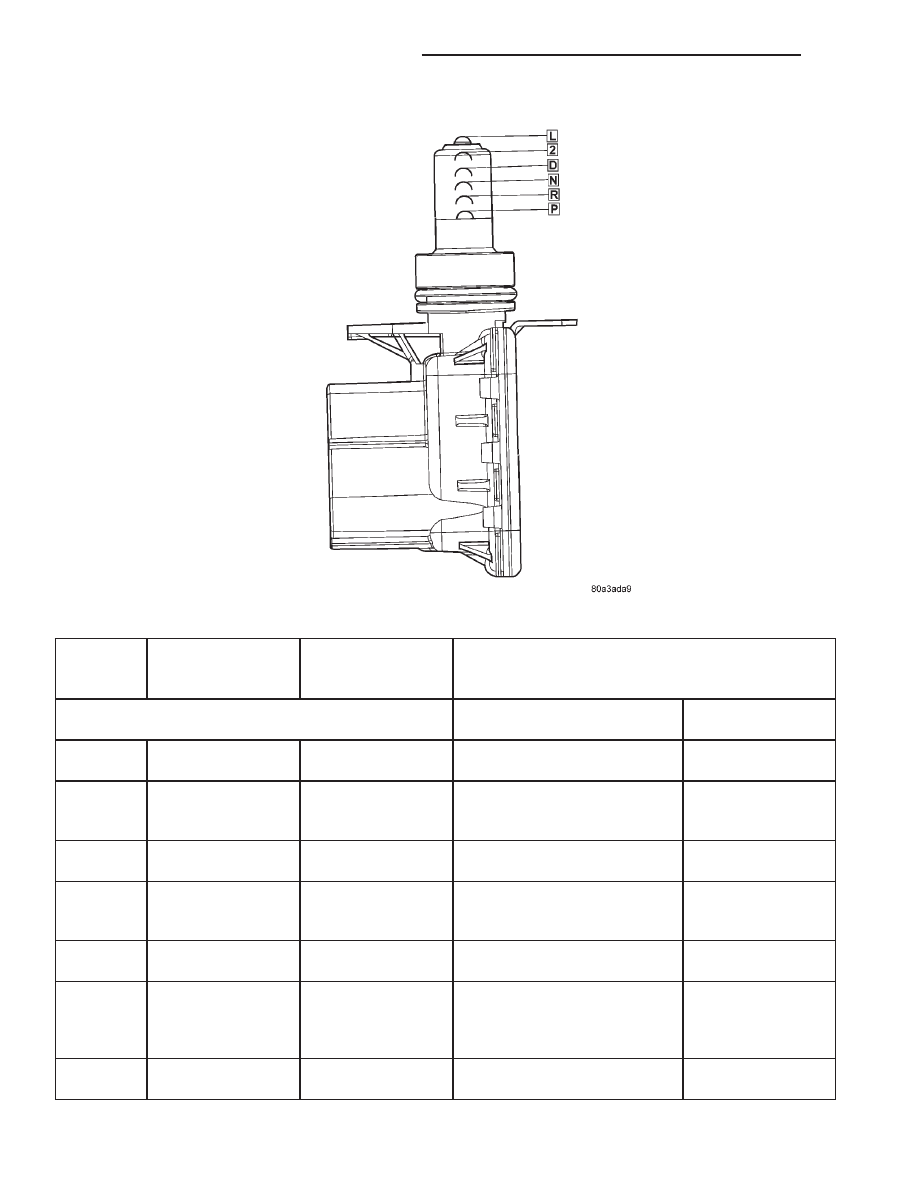Dodge Dakota (R1). Manual - part 687

Mechanical
State
Electronic Display
(Ignition
Unlocked)
Electronic Display
(Ignition On)
Indicated Gear Position
Transmission Status
Column Shifter
Position
P
P
P
Vehicle is in PARK with the
pawl engaged.
In the PARK gate.
R
The PARK pawl is disengaged
and the vehicle is free to roll,
but REVERSE is not engaged.
Between the PARK
and REVERSE
gates.
R
R
R
The transmission is
hydraulically in REVERSE.
In the REVERSE
gate.
N
The transmission is
transitioning between
REVERSE and NEUTRAL.
Between the
REVERSE and
NEUTRAL gates.
N
N
N
The vehicle is in NEUTRAL.
In the NEUTRAL
gate.
N
The transmission is
transitioning between
NEUTRAL and DRIVE, but is
not in DRIVE.
Between the
NEUTRAL and
DRIVE gates.
D
D
D
The transmission is
hydraulically in DRIVE.
In the DRIVE gate,
Fig. 253 Transmission Range Sensor Linear Movement
21 - 392
AUTOMATIC TRANSMISSION - 46RE
AN
TRANSMISSION RANGE SENSOR (Continued)